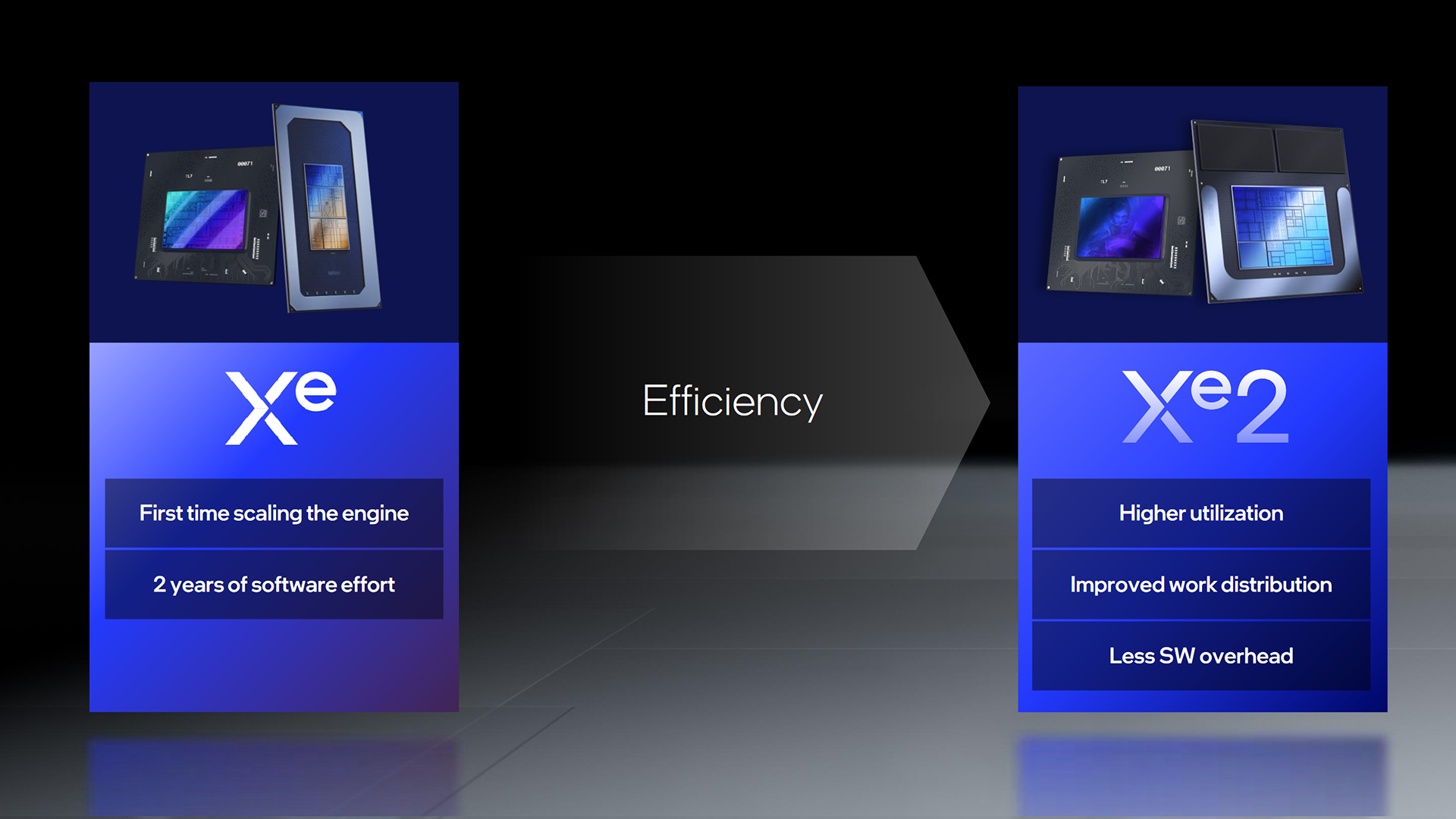Intel has made 'a tremendous amount of fixes for compatibility' in its Battlemage GPU architecture to ensure games run as they should
There's more to a good graphics card than DirectX compatibility, says Intel's Tom Petersen.

Intel's next graphics architecture, Xe2, will be more widely compatible with games and less clunky, says Intel Fellow Tom Petersen. The improvements announced so far for Xe2 include many specifically designed to correct issues widely reported with current Arc discrete graphics cards. But they're also designed to and put it in line with the more popular architecture of the day.
The new Xe2 architecture powering Intel's latest Lunar Lake processors is the same as what's set to arrive inside its Battlemage graphics cards. We're still none the wiser as to when Battlemage will be released, though Lunar Lake is coming later this year, in Q3.
Over at a Lunar Lake event, Petersen has spoken about what we can expect from the forthcoming graphics architecture: "When you think back to Alchemist, and as new games launch, we have a lot of issues and we require lots of bug fixes and driver fixes. And DX9 specifically needs a lot of work.
"We've made a tremendous amount of fixes for compatibility all across the architecture. So by its nature, we are more, let's call it, compliant with the dominant expectation."
These changes take various forms, though I'm told it's not only improvements to the software stack, but changes to the silicon itself to make it gel more easily with modern games.
There's hardware support for commonly used commands, such as execute indirect, which causes headaches and slows performance on Alchemist. Another command, Fast Clear, is now supported in the Xe2 hardware, rather than having to be emulated in software as it was on Alchemist.
There's also been a shift from SIMD8 to SIMD16 for the Vector Engine—the core block of Intel's GPU—which should help improve efficiency. Alongside further improvements for bandwidth and, importantly, utilisation.
Keep up to date with the most important stories and the best deals, as picked by the PC Gamer team.





"Think about Xe2 as the next generation of GPU architecture designed to be more compatible with games and higher utilisation," Petersen says.
The dominant expectation Petersen talks about is a sort-of graphics programming zeitgeist—it's whatever the done thing. As Petersen later explains, the done thing in graphics is whatever "the dominant architecture" does, i.e. Nvidia.
"Back in the day we were DX compliant, which turns out to not quite be enough. You need to be similar to the dominant architecture. And that's the direction that we're heading with Xe."
To try to back up these claims, Intel brought F1 24 to the event and showed it running smoothly on Lunar Lake's new eight Xe-core GPU. It was running at 1080p, with ray-traced shadows, and XeSS was enabled. I couldn't see the machine playing the game, however, it may have been a development kit. Still, ray-traced shadows on a thin-and-light mobile processor isn't bad going, courtesy of the improved Ray Tracing Units (RTUs) within Xe2. That should make for a material improvement with Battlemage in ray tracing, too.
Further to that, Petersen points out it has F1 24 running smoothly on Lunar Lake on the game's release date.
"This is a brand new game. And it's actually one of the first times that Intel has been able to show a brand new game on the day of launch on our graphics cards that has tremendous performance and tremendous progress.
"It's above 60 frames per second and, using XeSS, giving a smooth and seamless experience."

It's a good sign of what's to come for Battlemage, which would need to be a lot more stable than Alchemist to stand a chance versus Nvidia or AMD in the discrete market, especially above the entry-level. Though one game is admittedly not much to go on. Alchemist was also very strong in specific games.
Intel suggests further improvements with Xe2 to improve performance. Lunar Lake's GPU is 1.5x faster than Meteor Lake's, and with more cores and higher power budgets, Battlemage should at the very least offer around the same improvement, but I'm quietly hoping for a lot more.
If utilisation and efficiency are up with Xe2, a bigger GPU than Lunar Lake's should see an even bigger improvement, right?
Best gaming PC: The top pre-built machines.
Best gaming laptop: Great devices for mobile gaming.

Jacob earned his first byline writing for his own tech blog. From there, he graduated to professionally breaking things as hardware writer at PCGamesN, and would go on to run the team as hardware editor. He joined PC Gamer's top staff as senior hardware editor before becoming managing editor of the hardware team, and you'll now find him reporting on the latest developments in the technology and gaming industries and testing the newest PC components.


